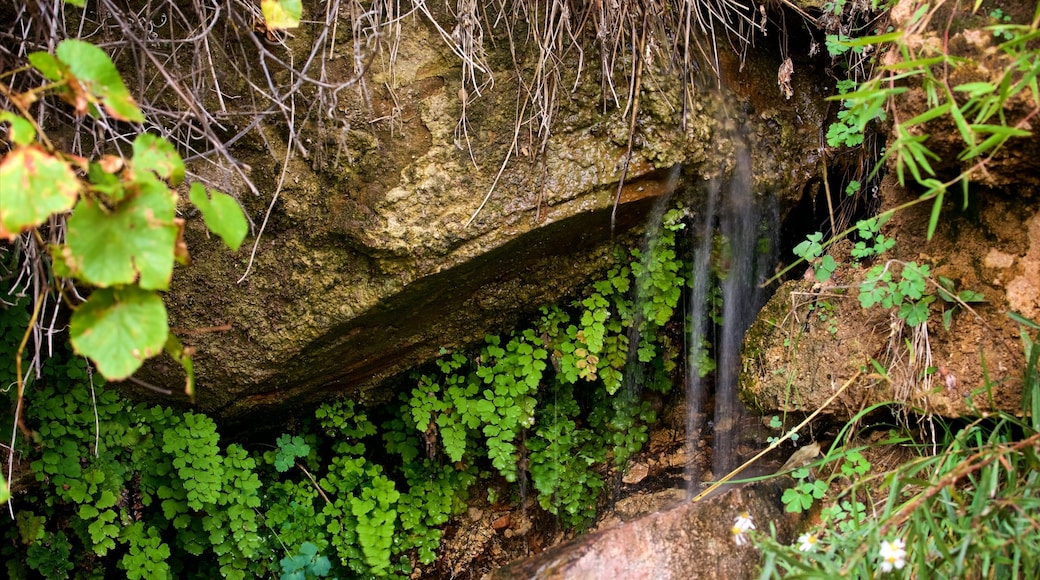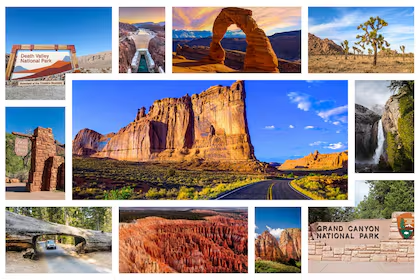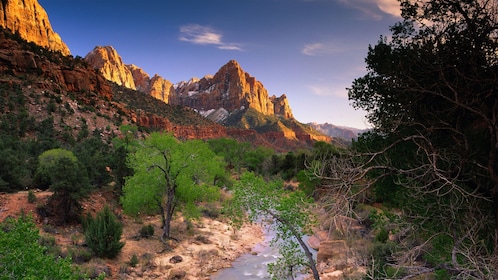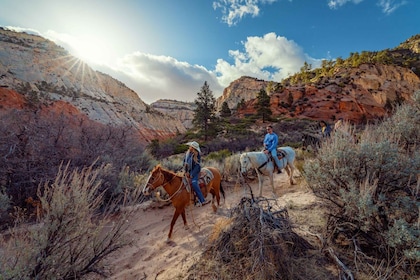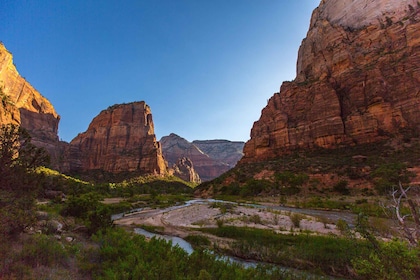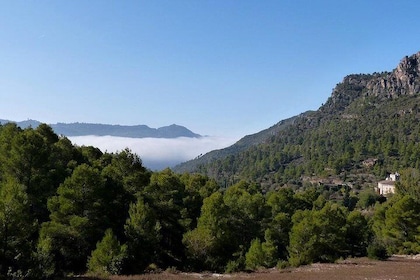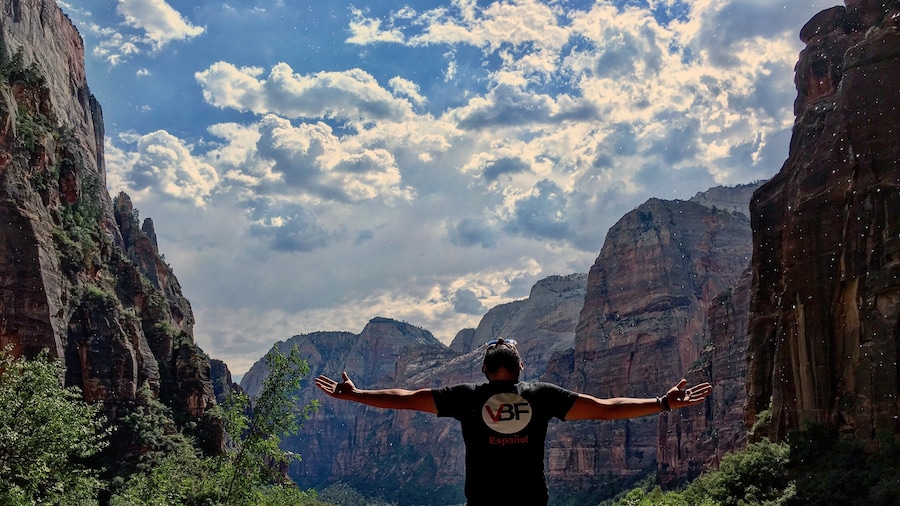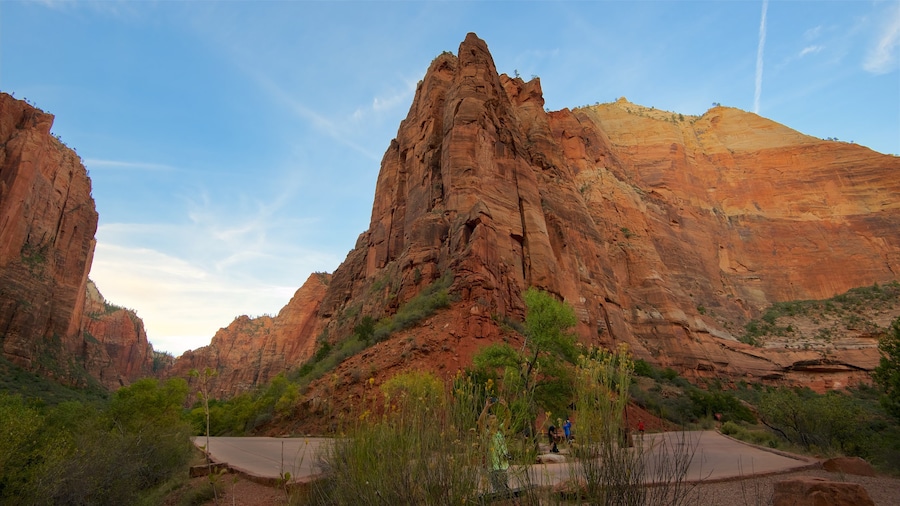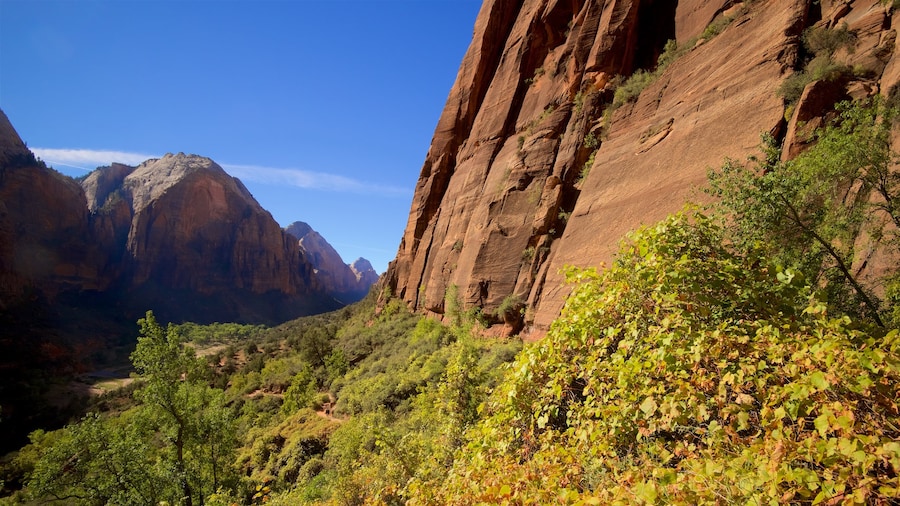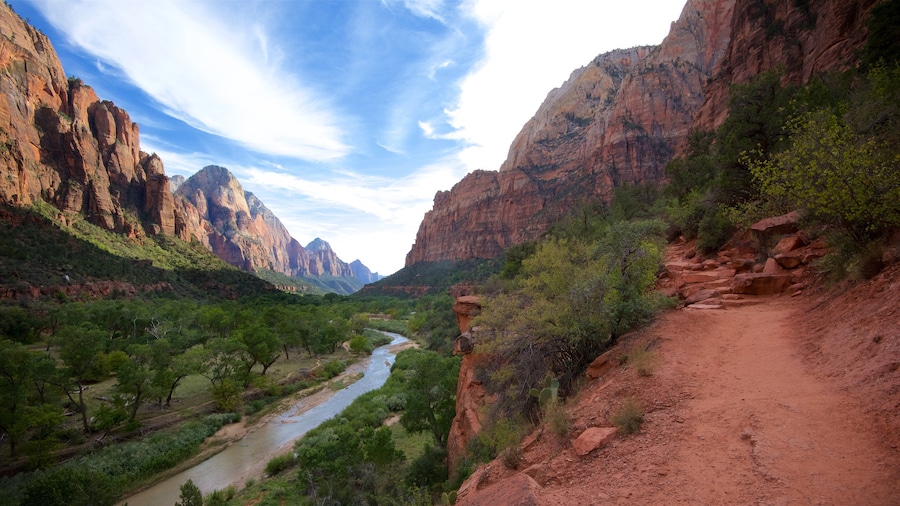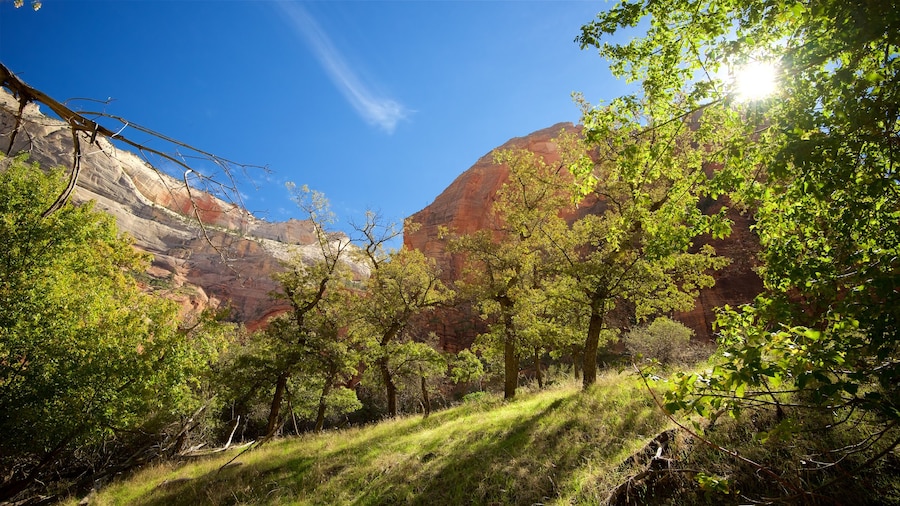Magnificent geological formations are featured throughout this park. Notice the lush foliage hanging from the rocks in this area that is classified as a desert.
Weeping Rock Trail is a popular spot in Utah’s Zion National Park. Take photographs of the incredible views and vegetation in the area. Hike this short trail, which measures only 0.4 mile (0.6 kilometer) but is remarkably fascinating and beautiful.
An alcove at the end of the trail allows visitors to view Zion Canyon below and lush vegetation of ferns, mosses and golden and western columbine. Be prepared to get a little wet along the path, which can be a pleasant experience on a hot summer day. Watch your footing, as the trail is steep and can be slippery and uneven in sections. These features make the trail unsuitable for strollers and wheelchairs.
Weeping Rock gets its name from water that continuously seeps through the hard sandstone at varying levels of intensity. In summer the water has a slower flow, but in winter it can be quite forceful. The water originates from rain and snow that enters Weeping Rock from above and slowly permeates the varying composition of sandstone. Stay informed along the trail with plaques describing this phenomenon and identifying the area’s vegetation.
Start at the Weeping Rock Trail shuttle stop and turn left after crossing a footbridge. Look up to see the towering Great White Throne and Cable Mountain, which was used for lumbering in the early 1900s. Hike other trails in the park, such as Hidden Canyon or Observation Point, which provide scenic views of Weeping Rock. As tempting as it may be to wander, be sure to stay on trails to protect the sensitive ecology and avoid injury on slippery rocks.
The park is located in southern Utah, east of St. George and south of Cedar City. Pay the entrance fee and park at the Zion National Park Visitor Center in the summer and take a shuttle to the canyon’s parking lot and trailheads. During other seasons drive your own vehicle to the trailhead. Although Weeping Rock Trail is open throughout the year, it may close at times in winter due to icy conditions.



